Tiny Tick Bites: Understanding the Dangers and Prevention Methods
What are the risks associated with tiny tick bites. How can you protect yourself and your family from tick-borne diseases. What should you do if you find a tick on your skin. How to properly remove a tick and when to seek medical attention.
The Hidden Dangers of Nymph Ticks
Ticks come in various sizes, but the tiniest ones, known as nymph ticks, pose a significant threat. These poppy seed-sized arachnids are often overlooked due to their minuscule size, yet they carry a higher risk of transmitting diseases to humans. Why are these tiny ticks more dangerous than their adult counterparts?
- Nymph ticks are most active during spring and early summer
- They are more likely to transmit infections to humans
- Their small size makes them difficult to detect
- Nymphs can remain attached to the skin for longer periods without detection
Understanding the life cycle of ticks is crucial in recognizing the danger they pose. A tick progresses through four stages: egg, larva, nymph, and adult. The nymph stage is particularly concerning for human health.
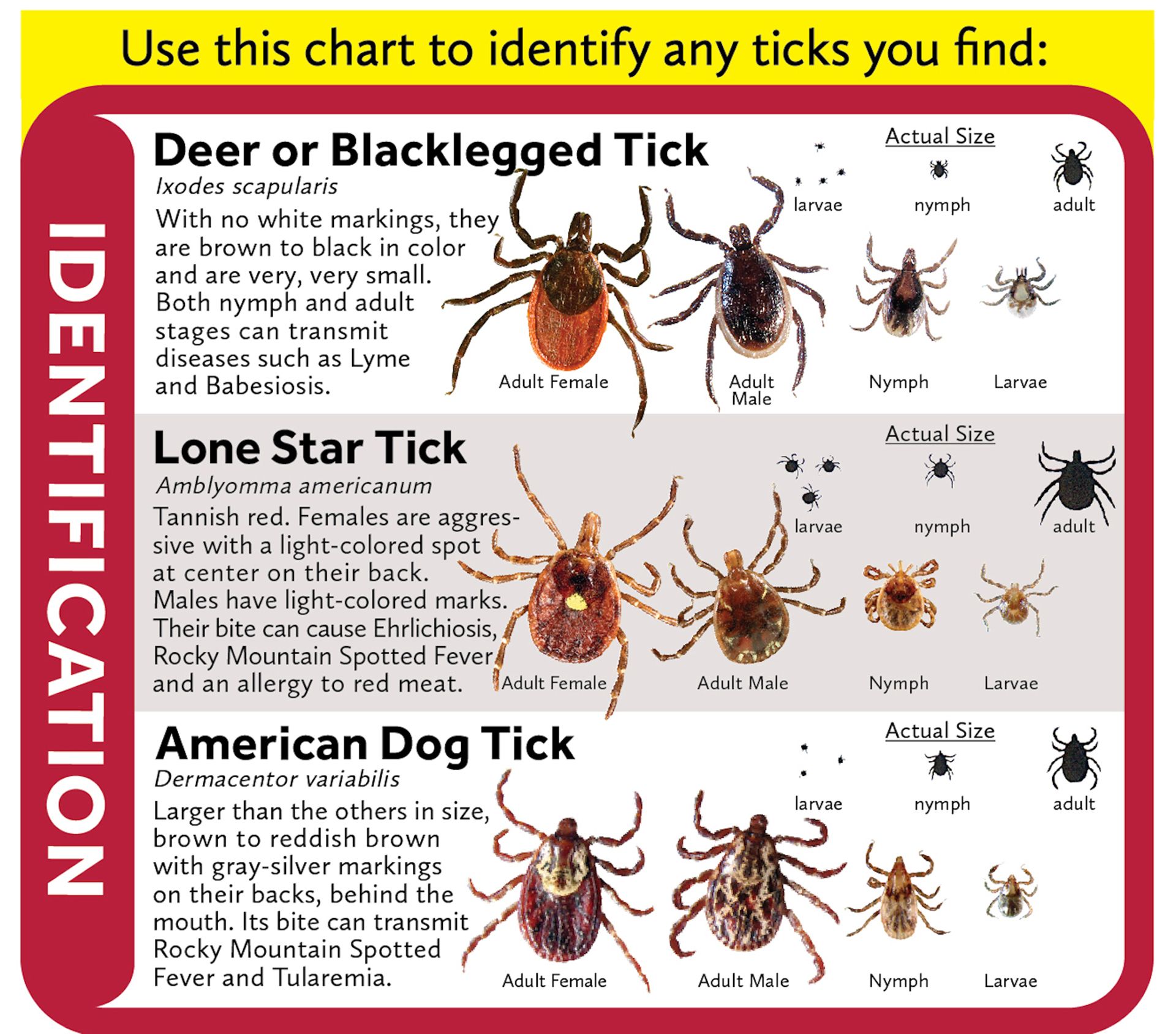
Why are nymph ticks more likely to transmit diseases?
Nymph ticks have already fed once in their lifetime, typically on small animals that may carry disease-causing pathogens. This prior feeding increases the likelihood that they are infected with harmful bacteria or viruses. When these nymphs feed on humans, they can transmit these pathogens, leading to various tick-borne illnesses.
Identifying and Preventing Tick Bites
Protecting yourself and your family from tick bites requires vigilance and preventive measures. Here are some effective strategies to minimize the risk of encountering ticks:
- Wear long-sleeved shirts and pants when in wooded or grassy areas
- Use insect repellents containing DEET or permethrin
- Conduct thorough tick checks after outdoor activities
- Shower within two hours of coming indoors
- Treat pets with tick prevention products
Regular tick checks are crucial, especially for children who spend time outdoors. Pay close attention to areas where ticks are likely to hide, such as the scalp, behind the ears, under the arms, and in skin folds.
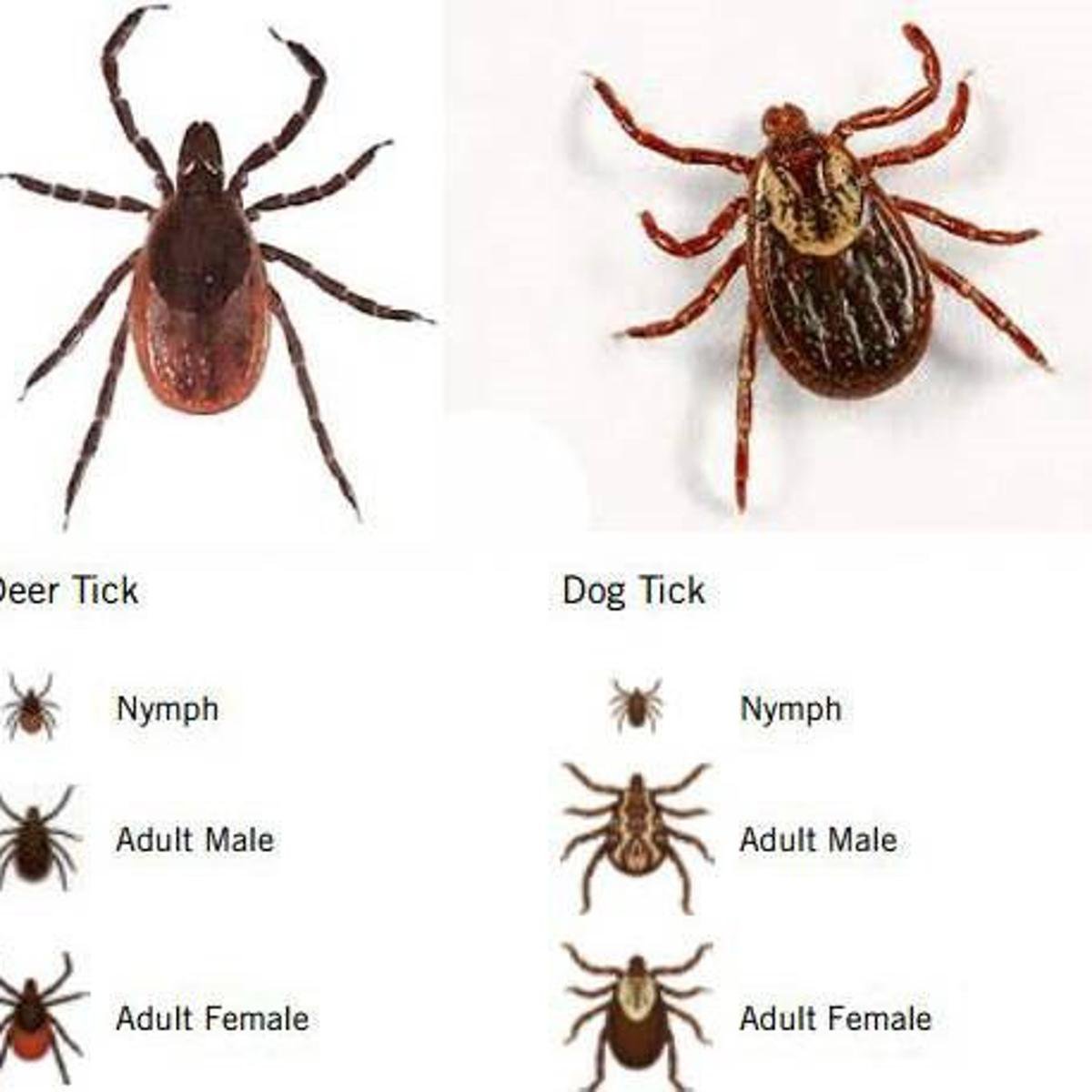
How can you effectively check for ticks?
To conduct a thorough tick check, use a full-length mirror or ask a family member for assistance. Run your hands over your entire body, feeling for any small bumps or irregularities. Pay special attention to warm, moist areas where ticks prefer to attach. For children, parents should perform these checks, being particularly vigilant in examining the scalp and hairline.
Proper Tick Removal Techniques
If you discover a tick attached to your skin, it’s essential to remove it promptly and correctly. Improper removal can increase the risk of disease transmission or leave parts of the tick embedded in your skin.
Follow these steps for safe tick removal:
- Use fine-tipped tweezers to grasp the tick as close to the skin’s surface as possible
- Pull upward with steady, even pressure
- Avoid twisting or jerking the tick, which can cause the mouth-parts to break off and remain in the skin
- After removal, thoroughly clean the bite area and your hands with rubbing alcohol or soap and water
- Dispose of the tick by submersing it in alcohol, placing it in a sealed bag, or flushing it down the toilet
Is it necessary to save the tick for identification?
While it’s not always necessary to save the tick, doing so can be helpful if you develop symptoms later. You can preserve the tick in a sealed container with a damp paper towel. This allows for potential identification and testing if needed. However, routine tick testing is not recommended as it may not accurately predict the risk of disease transmission.

Recognizing Symptoms of Tick-Borne Diseases
Tick-borne diseases can manifest in various ways, and early recognition of symptoms is crucial for timely treatment. While symptoms may vary depending on the specific disease, some common signs to watch for include:
- Fever and chills
- Headache
- Fatigue
- Muscle and joint pain
- Skin rashes, including the characteristic bull’s-eye rash of Lyme disease
It’s important to note that not all tick bites result in disease transmission, and not all tick-borne illnesses present with a rash. However, if you develop any unusual symptoms after a known tick bite or potential exposure, it’s best to consult with a healthcare provider.
How soon after a tick bite do symptoms typically appear?
The onset of symptoms can vary depending on the specific disease. For Lyme disease, the most common tick-borne illness in the United States, symptoms typically appear within 3 to 30 days after the tick bite. Other diseases, such as Rocky Mountain spotted fever, may have a shorter incubation period of about 2 to 14 days. Regardless of the timeline, it’s crucial to remain vigilant and report any concerning symptoms to your healthcare provider.

Lyme Disease: A Growing Concern
Lyme disease, transmitted primarily by the black-legged tick (also known as the deer tick), has become one of the fastest-growing infectious diseases in the United States. The CDC estimates that approximately 476,000 Americans are diagnosed and treated for Lyme disease each year.
This bacterial infection can cause a wide range of symptoms, including:
- Early stage: Bull’s-eye rash (erythema migrans), fever, chills, fatigue, body aches, headache
- Later stages: Severe headaches, neck stiffness, additional rashes, arthritis with severe joint pain and swelling, facial palsy, heart palpitations, inflammation of the brain and spinal cord
Can Lyme disease be prevented after a tick bite?
In some cases, if caught early, Lyme disease can be prevented with a single dose of antibiotics. This preventive treatment is typically considered when:
- The tick is identified as an adult or nymphal black-legged tick
- The tick has been attached for 36 hours or more
- The preventive treatment can be started within 72 hours of tick removal
- The local rate of tick infection with Lyme bacteria is 20% or higher
However, this approach is not without controversy, and the decision to use preventive antibiotics should be made in consultation with a healthcare provider, considering individual risk factors and local disease prevalence.

Other Tick-Borne Diseases to Be Aware Of
While Lyme disease receives significant attention, it’s not the only illness transmitted by ticks. Other tick-borne diseases that pose health risks include:
- Rocky Mountain spotted fever
- Anaplasmosis
- Babesiosis
- Ehrlichiosis
- Powassan virus disease
- Tularemia
Each of these diseases has its own set of symptoms and potential complications. Some, like Rocky Mountain spotted fever, can be particularly severe if not treated promptly.
Are certain regions more prone to specific tick-borne diseases?
Yes, the prevalence of tick-borne diseases varies by geographic region. For example:
- Lyme disease is most common in the Northeast, mid-Atlantic, and upper Midwest regions of the United States
- Rocky Mountain spotted fever is more prevalent in the southeastern United States
- Anaplasmosis is found primarily in the upper Midwest and northeastern states
- Babesiosis is most common in the Northeast and upper Midwest
Understanding the local prevalence of tick-borne diseases can help healthcare providers make informed decisions about diagnosis and treatment.
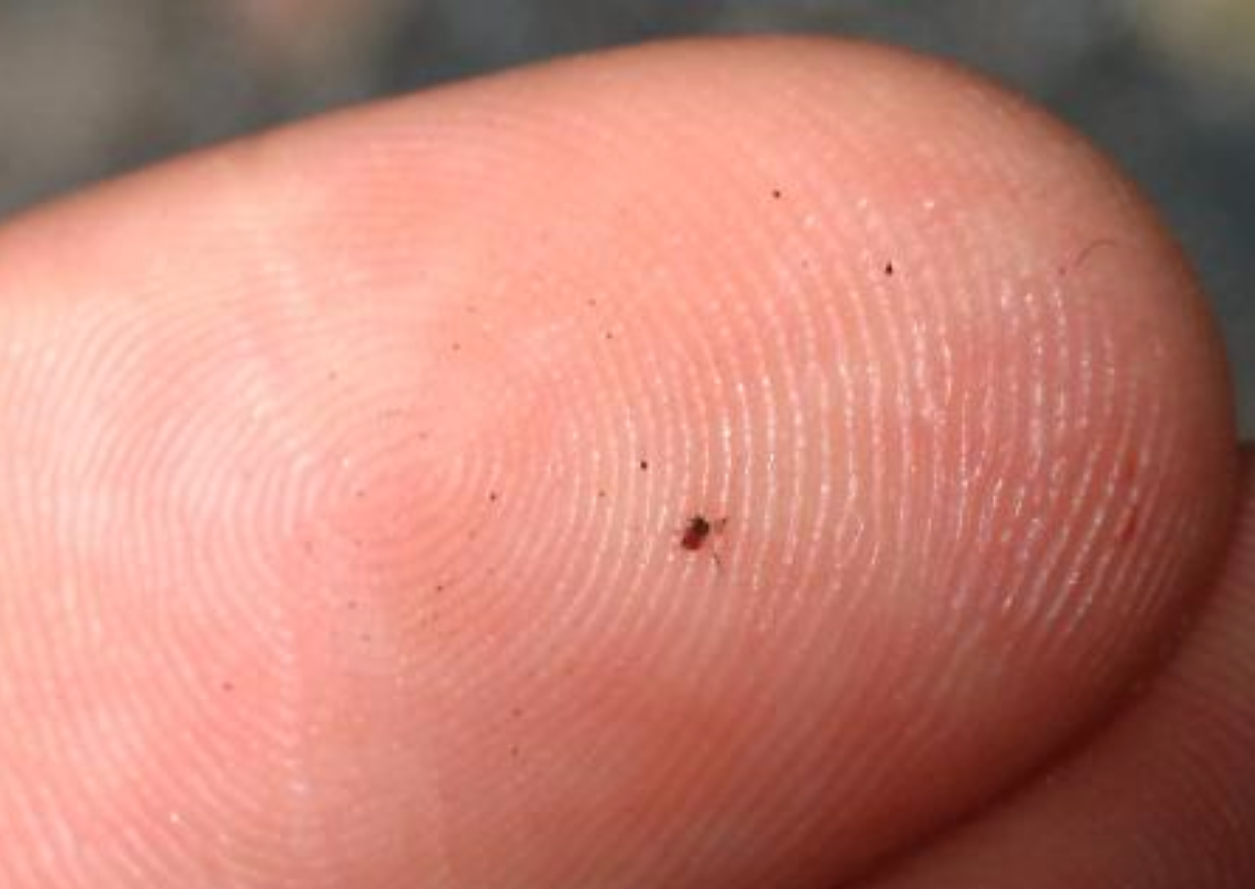
Protecting Your Outdoor Environment
Creating a tick-safe zone around your home can significantly reduce the risk of tick encounters. Here are some landscaping and property management techniques to discourage ticks:
- Keep lawns mowed and remove leaf litter
- Clear tall grasses and brush around homes and at the edge of lawns
- Place a 3-ft wide barrier of wood chips or gravel between lawns and wooded areas
- Stack wood neatly and in a dry area to discourage rodents that ticks feed on
- Keep playground equipment, decks, and patios away from yard edges and trees
- Consider using acaricides (tick pesticides) in your yard, but be aware of the potential environmental impact
How effective are natural tick repellents?
While many natural tick repellents are marketed as safer alternatives to chemical products, their efficacy can vary. Some natural options that have shown promise include:
- Oil of lemon eucalyptus
- Citronella oil
- Garlic oil
- Nootkatone (derived from grapefruit)
However, these natural repellents often require more frequent application and may not provide the same level of protection as DEET or permethrin. If you choose to use natural repellents, be vigilant in reapplying and conducting thorough tick checks after outdoor activities.

Educating Children About Tick Safety
Teaching children about tick safety is crucial for preventing tick-borne diseases. Here are some age-appropriate ways to educate kids about ticks:
- Use visual aids to show what ticks look like and where they might be found
- Teach proper clothing choices for outdoor activities
- Make tick checks a routine after playing outside
- Encourage kids to tell an adult if they find a tick on themselves
- Explain the importance of staying on trails and avoiding tall grass
How can schools contribute to tick awareness?
Schools can play a significant role in educating students about tick safety:
- Incorporate tick education into science or health curricula
- Provide informational materials to parents at the beginning of tick season
- Train staff to recognize potential tick-borne illness symptoms
- Implement policies for outdoor activities that minimize tick exposure
- Consider posting tick awareness signs in school yards or playgrounds
By making tick awareness a community effort, we can better protect our children from the risks associated with tick-borne diseases.
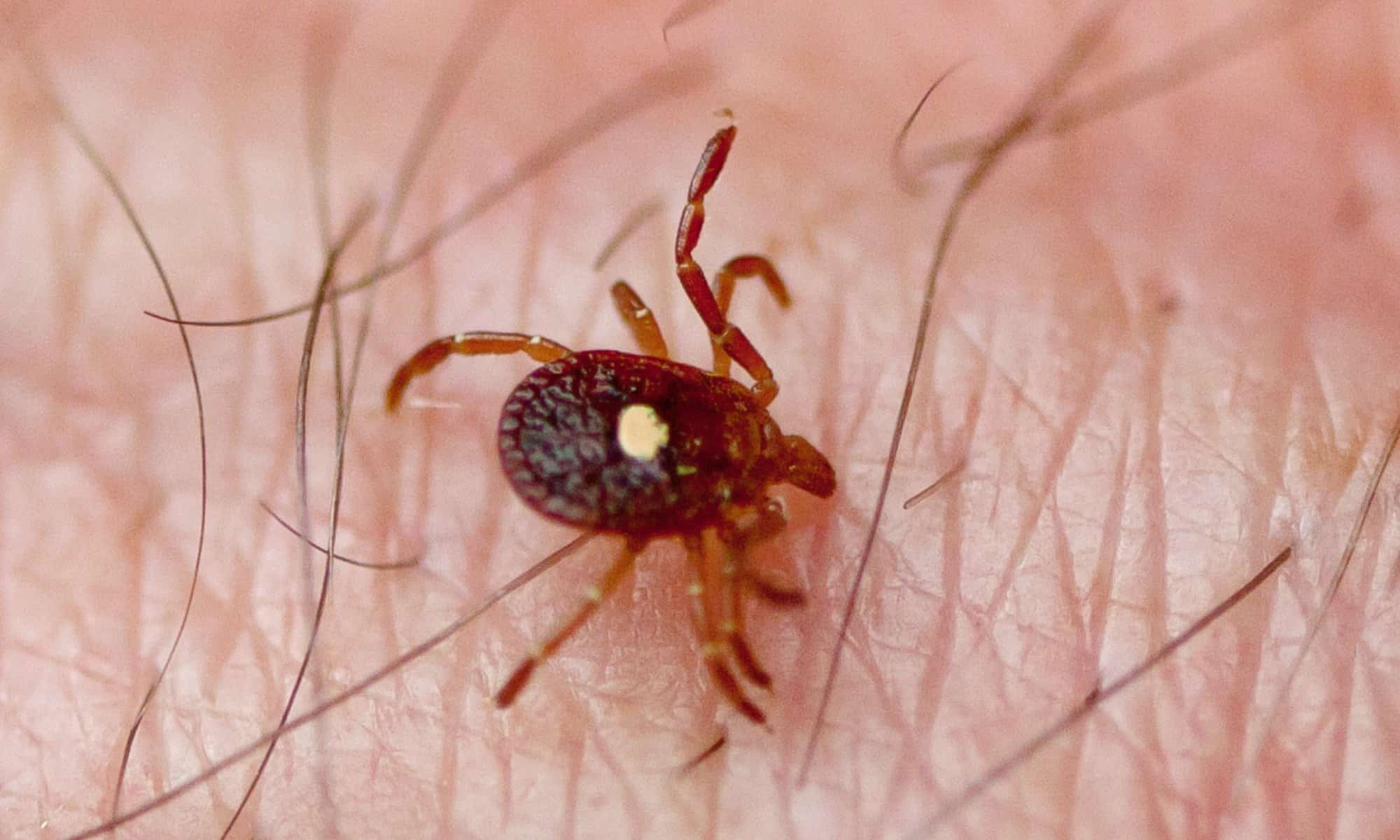
Advances in Tick-Borne Disease Research
The field of tick-borne disease research is continually evolving, with scientists working to develop better diagnostic tools, treatments, and prevention methods. Some recent advancements include:
- Development of more accurate and rapid diagnostic tests for Lyme disease
- Research into potential vaccines for tick-borne diseases
- Exploration of biological control methods to reduce tick populations
- Genetic studies to understand tick-borne pathogen transmission
- Investigation of long-term effects of Lyme disease and other tick-borne illnesses
What challenges remain in tick-borne disease research?
Despite progress, several challenges persist in the field of tick-borne disease research:
- Difficulty in diagnosing some tick-borne diseases due to nonspecific symptoms
- Lack of consensus on the treatment of persistent symptoms following Lyme disease
- Limited understanding of co-infections and their impact on disease course
- Need for more effective tick control methods that are environmentally friendly
- Addressing the expanding geographic range of ticks due to climate change
Continued research and funding are essential to overcome these challenges and improve our ability to prevent, diagnose, and treat tick-borne diseases effectively.
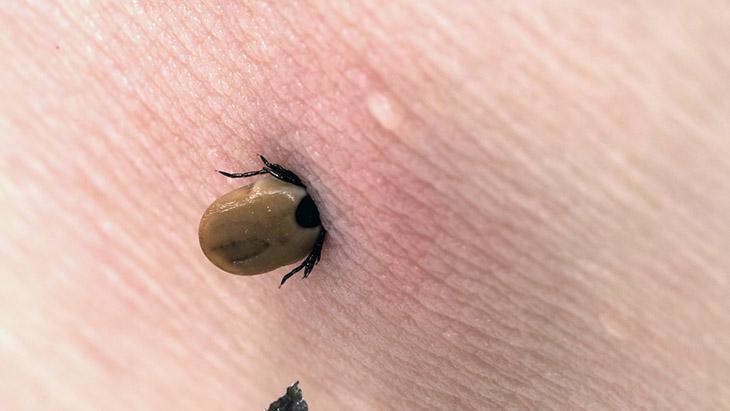
What to Do About Tick Bites (for Parents)
en español: Primeros auxilios: Picaduras de garrapata
Medically reviewed by: Yamini Durani, MD
Primary Care Pediatrics at Nemours Children’s Health
Most tick bites are harmless and don’t need medical treatment. But some ticks (like the deer tick, wood tick, and others) can carry harmful germs that cause diseases like Rocky Mountain spotted fever and Lyme disease. The deer tick is tiny, no larger than a pencil point. Other ticks are larger and easier to find on the skin.
How Do I Remove a Tick?
It’s important to remove a tick as soon as possible. Follow these steps:
- Use tweezers to grasp the tick firmly at its head or mouth, next to the skin. Use a magnifying glass, if you have one, to see the tick clearly.
- Pull firmly and steadily until the tick lets go of the skin. Do not twist the tick or rock it from side to side. Parts of the tick might stay in the skin, but eventually will come out on their own.

- Wash your hands and the site of the bite with soap and water.
- Swab the bite site with alcohol to disinfect the skin.
Note: Never use petroleum jelly or a hot match to kill and remove a tick. These methods don’t get the tick off the skin, and can make it burrow deeper and release more saliva (which makes it more likely to pass a disease).
What Are the Signs of Tick-Related Diseases?
Watch out for:
- a red bump ringed by an expanding red rash, which looks like a bull’s-eye (Lyme disease)
- red dots on the ankles and wrists (Rocky Mountain spotted fever)
- flu-like symptoms such as fever, headache, tiredness, vomiting, and muscle and joint aches
When Should I Call the Doctor?
Call your doctor if:
- Your child has had a tick bite, especially if the tick might have been on the skin for more than 24 hours. Sometimes, doctors prescribe a preventive dose of antibiotics for kids at high risk for Lyme disease.

- Part of the tick remains in the skin.
- A rash of any kind develops (especially a red-ringed bull’s-eye rash or red dots on wrists and ankles).
- The bite area looks infected (increasing warmth, swelling, pain, or oozing pus).
- Your child gets symptoms like a fever, headache, tiredness, stiff neck or back, joint swelling, or muscle or joint aches.
- Your child has facial paralysis (can’t move areas of the face).
How Can I Protect My Kids From Ticks?
To help prevent tick bites:
- After kids play outside, check their skin and hair — especially the scalp, behind the ears, around the neck, in the eyebrows and eyelashes, and under the arms.
- When playing in wooded areas, kids should wear long-sleeved shirts and pants and tuck pant legs into their socks.
- Use an insect repellent with at least 10% to 30% DEET for protection against bites and stings in kids older than 2 years. Always carefully follow the label directions for applying.

- Clothes also can be treated with a specific insecticide (like permethrin) to help prevent bites.
- Wash kids’ skin with soap and water when they come back inside. If you’ve been in an area with ticks, wash all clothes in hot water and tumble dry on high heat before they’re worn again.
- Avoid tick-infested areas.
Medically reviewed by: Yamini Durani, MD
Date reviewed: June 2023
Share:
/content/kidshealth/misc/medicalcodes/parents/articles/tick-bites-sheet
4 Reasons Poppyseed-Sized Ticks Are More Dangerous Than Adult Ones
Poppyseed muffin lovers across the United States cringed this month after seeing two photos tweeted by the Centers for Disease Control and Prevention (CDC). The first photo depicts a perfectly golden poppyseed muffin speckled with the black seeds — or so it seems.
The first photo depicts a perfectly golden poppyseed muffin speckled with the black seeds — or so it seems.
But after squinting our eyes and pulling our phones closer to our faces — our stomachs turned. There! On the second photo — a closer image — we spotted the tiny, blacked-legged ticks, (called nymph ticks) — atop our favorite poppyseed muffins.
Comments of all sorts, from the garden-variety jokester to critics and advocacy groups, came flooding in.
Lyme disease, transmitted by tick bites, is one of the fastest growing infectious diseases in the United States. Preventing Lyme disease and other tick-borne illnesses has been on America’s radar for a while, but we often think of ticks as those easily visible, half dime-sized bugs that burrow into our skin — or our dogs’.
So, what’s the difference between the tiny ticks and larger ones? Nymph ticks can’t be that dangerous, right? Wrong.
1. Nymph ticks are most active now, and they’re most likely to transmit infections to humans
A single tick will progress through four stages of development in its lifetime: egg, larva, nymph, and adult. The nymph tick is most active in the spring through the summer months, and it’s about the size of a poppy seed.
The nymph tick is most active in the spring through the summer months, and it’s about the size of a poppy seed.
And they don’t pack less of a punch because of their size. Nymph ticks are actually the most likely to transmit Lyme disease or another tick-borne infection to humans than ticks at other stages, according to the CDC.
Less than two millimeters in size, nymphs can bite people and remain virtually undetected. They also burrow into your or your pet’s skin.
Although adult ticks may also transmit Lyme disease, they’re much larger, so you’re more likely to see them and promptly remove them.
How to check for ticks
- Inspect yourself, your child, and your pets for ticks whenever you’ve been outdoors. Be sure to check the hidden spots and crevices of the body like the scalp, along the hairline, under the armpits, in the belly button, in the groin, and on the genitals.
Was this helpful?
2. A tick bite doesn’t feel like a mosquito bite
Many people think they’ll be able to feel when a tick bites them, just like they feel a mosquito bite.
But ticks are sneaky little bloodsuckers, and they’ve evolved with some sophisticated, almost science fiction-like mechanisms.
Their saliva contains natural anesthetic and immune suppressors to ensure that you don’t feel anything at all when they jab you to feed, reports the Internal Lyme and Associated Diseases Society (ILADS).
The less access the ticks have to your skin, the better. Wear light-colored clothing and tuck your long-sleeved shirt into your pants and your pants into your socks.
Protect your skin and clothing
- When outdoors, the CDC recommends using a tick repellent that contains at least 20 percent DEET or picaridin on your skin. Treat your clothing by spraying on a product with at least 0.5 percent permethrin.
Was this helpful?
3. It’s unclear how long ticks must be attached to you to transmit infections
Should you happen to quickly find a tick embedded in your skin, don’t assume you have no chance of contracting Lyme disease or another tick-borne infection.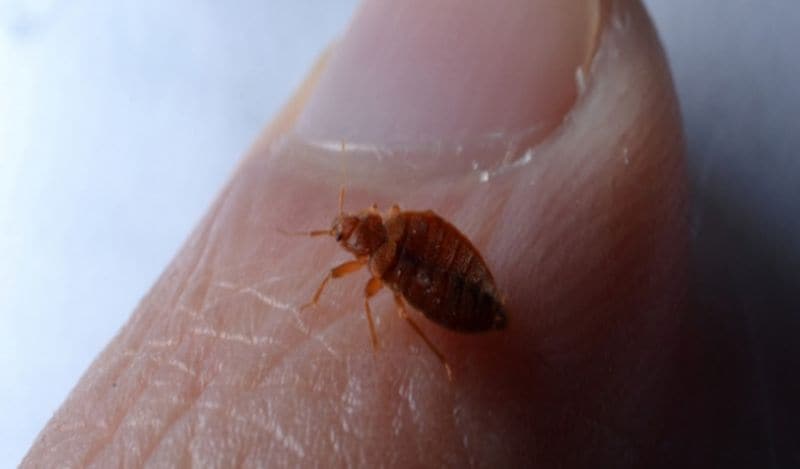
The CDC states that a tick must be attached to a host for 24-48 hours to transmit Lyme disease. But a 2015 review stated that the minimum attachment time for transmission of an infection has never been established.
That study also brought to light six documented cases of Lyme disease that had been transmitted in less than 6 hours. Plus, the other diseases that ticks carry — such as babesiosis and bartonellosis — may occur within minutes after a tick has latched onto your skin.
What does this mean for you? While the transmission risks may be lower the less time a tick is attached to you, the risk isn’t completely eliminated if you find an embedded tick and remove it before 24 hours has passed.
Also, keep in mind, many people may not know how or when they acquired a tick bite, making it very difficult to calculate the length of time it was attached for.
How to remove a tick
- Use fine-pointed tweezers to grasp the tick’s mouth as close to your skin as possible.
 Don’t put Vaseline on the tick, essential oils, or burn it. Instead, use your tweezers to pull the tick straight out of the skin and save it for testing. Wash your hands and the area of the bite with soap and water.
Don’t put Vaseline on the tick, essential oils, or burn it. Instead, use your tweezers to pull the tick straight out of the skin and save it for testing. Wash your hands and the area of the bite with soap and water.
Was this helpful?
4. If you’ve been bitten by an infected tick, you may not develop a rash
Following a tick bite, many people wait and see if they develop a bulls-eye rash. If not, they may wrongfully assume they’re in the clear.
In reality, less than 50 percent of people infected with Lyme disease have a memory of any rash. Other symptoms, like fatigue and aches, occur in many common illnesses. That can make obtaining an accurate diagnosis challenging.
Tick testing
- If you choose to have your tick tested, organizations like the Bay Area Lyme Foundation will test your tick free of charge or for a small fee.
Was this helpful?
Lyme disease is already an epidemic across many parts of the United States, and cases doubled between 2005 and 2015. Although it’s most prevalent in the Northeast, Midwest, and West Coast, it’s been found in all 50 states.
Although it’s most prevalent in the Northeast, Midwest, and West Coast, it’s been found in all 50 states.
When Lyme disease is caught in its early stages, the chances it can be cured are greater. But if left untreated, it can lead to a myriad of chronic, debilitating symptoms. Antibiotic treatment is inadequate for 10-20 percent of people, leading to ongoing symptoms, or Post-Treatment Lyme Disease Syndrome.
Ultimately, your best defense is to remain vigilant of any unusual symptoms that pop up.
In the early stages of an infection, the symptoms may include flu-like symptoms such as:
- fever
- chills
- sweats
- muscle aches
- fatigue
- nausea
- joint pain
Neurological symptoms like facial drooping (Bell’s palsy) or serious cardiac issues like Lyme carditis can also occur.
If you experience any of these symptoms following a possible exposure to an infected tick, visit a healthcare practitioner who has expertise in the diagnosis and treatment of Lyme disease.
Though a poppyseed-sized tick may seem like a little issue, it has the potential to ruin much more than your cravings for muffins.
Share on Pinterest
Jenny Lelwica Buttaccio, OTR/L, is a Chicago-based freelance writer, occupational therapist, health coach in training, and certified Pilates instructor whose life was transformed by Lyme disease and chronic fatigue syndrome. She writes on topics including health, wellness, chronic illness, fitness, and beauty. Jenny openly shares her personal healing journey at The Lyme Road.
Small Tick – Big Trouble
Tick bites are to be expected in warm, non-rainy weather. Favorite places are ravines, edges and paths overgrown with grass. The tick does not fall on a person or animal from above. During the bite, the tick injects a special anesthetic substance, so the attack occurs completely unnoticed. For bites choose hidden clothes and tender places. Favorite places of suction are elbows, scalp, legs and arms, groin.
Bloodsucking mites appear in the middle of spring, their number increases rapidly and by May becomes the maximum, remaining until the very beginning of July. After which they die out, but a small number can be observed until the beginning of autumn.
One of the most serious consequences is contracting a disease:
1. Viral encephalitis is a disease that affects the nervous system. In severe cases, the patient develops paralysis and death occurs.
You can become infected both by a tick bite and by drinking unboiled milk of cows or goats infected with encephalitis.
Symptoms appear a week or two after being bitten by a tick: weakness of the arms and legs, impaired sensitivity of the skin of the upper body, temperature up to 39- 40 degrees, severe headache, vomiting, redness of the skin of the upper body and mucous membranes.
2. Tick-borne borreliosis or Lyme disease – the disease occurs in a chronic form, borreliosis can stay in the body for decades.
Symptoms appear 2 to 30 days after the bite. A large bright scarlet spot appears at the site of the introduction of the virus. After 20-30 days, the spot disappears completely, and after 4-6 weeks, symptoms of damage to the nervous and other systems appear. It is necessary to treat this disease in a hospital, because if the pathogen is not destroyed, a chronic form develops, resulting in disability.
3. Relapsing tick-borne typhus – a blister appears at the site of the bite, the victim suddenly starts to shiver, his head hurts, he is very hot, he is lethargic, his limbs aches, the temperature is up to 39 – 40 degrees, he feels sick. The body becomes covered with a rash, the liver and spleen increase in size, yellowing of the sclera and skin can be observed. Sometimes there are symptoms of involvement in the process of the heart, respiratory organs. The acute period lasts 2-6 days, then the temperature returns to normal.
The patient’s condition is improving. But after a few days, the second attack begins. Attacks can be from four to twelve. Subsequent attacks are usually milder than the first. The disease is diagnosed with a blood test.
But after a few days, the second attack begins. Attacks can be from four to twelve. Subsequent attacks are usually milder than the first. The disease is diagnosed with a blood test.
Inpatient treatment. If a person was healthy and not exhausted before infection, then he has every chance of fully recovering.
4. Q fever
Ticks are one of the carriers of pathogens. Possible infection from the patient through sputum or breast milk.
Symptoms may appear a few days or a month after the tick bite. Usually the onset of the disease is rapid: aches all over the body, headache, cough, aversion to food, redness of the face, an increase in body temperature up to 38 – 40 degrees.
In many cases, inflammation of the lungs is detected.
Q fever is treated only in the hospital. The disease responds well to medical treatment. A cured person is not re-infected.
The probability of getting infected when bitten by a tick is the higher, the longer the insect was in the sucking state. Therefore, the tick should be removed as soon as possible.
Therefore, the tick should be removed as soon as possible.
It is best to use tweezers for removal, the most convenient is a surgical clip. The grip should be carried out as close to the head as possible. Firmly grabbing the insect, you need to start twisting it and gently pulling it towards you. No need to sharply pull the insect towards you – the proboscis can come off.
You can remove the insect with a normal thread. To do this, tie a knot between the head of the tick and the body. It turns out that the knot is tightened at the base of the proboscis. You need to pull the thread very carefully and slowly. Otherwise, the insect will tear.
It is very important not to squeeze the body of the insect, as this may force the contents of the tick, along with pathogens, into the wound.
If, after removing the tick, a small black dot remains at the suction site, this means that the head has come off and must be removed. To do this, the affected area is treated with alcohol and the wound is cleaned with a disinfected needle.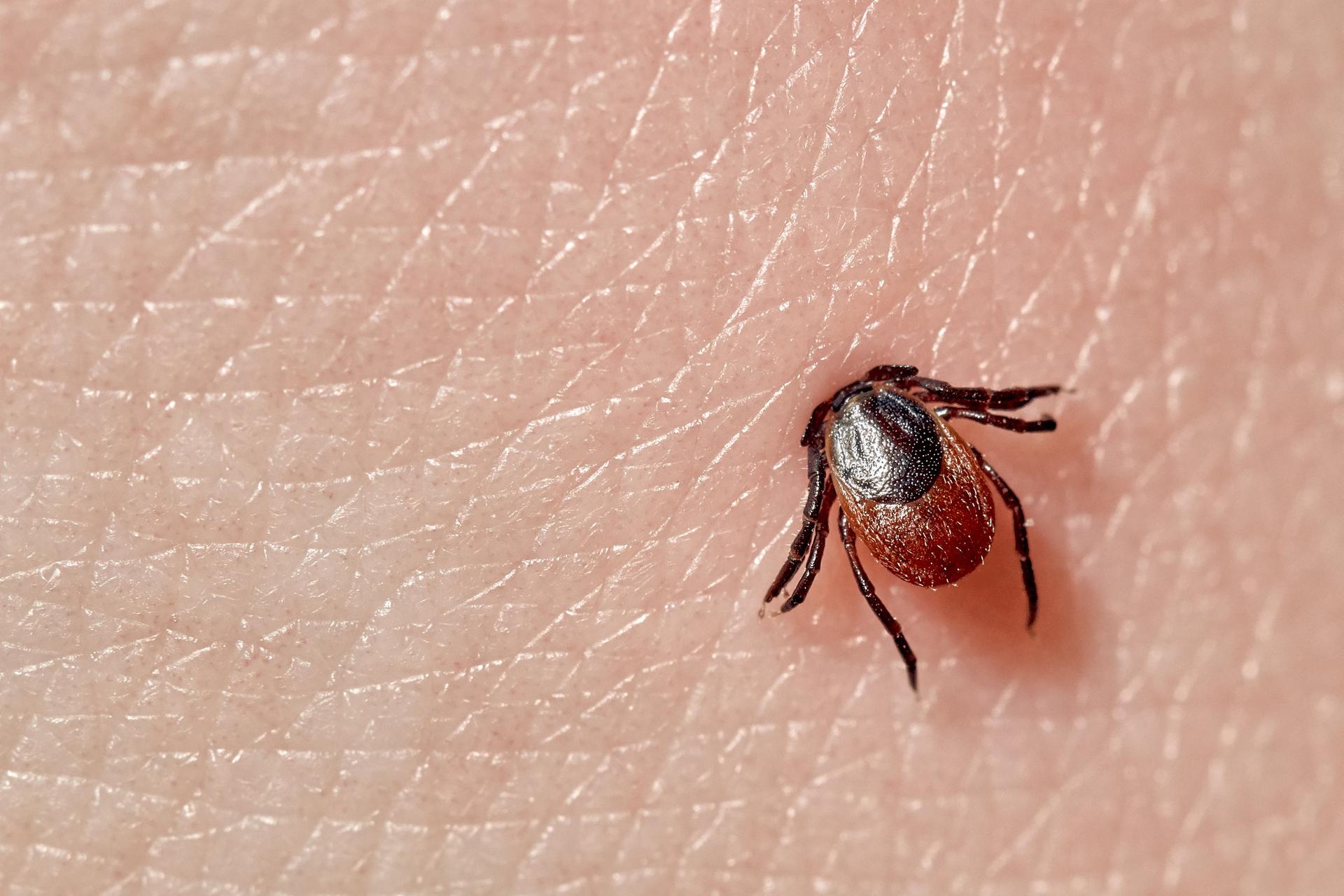 After removing the head, you need to lubricate the wound with alcohol or iodine.
After removing the head, you need to lubricate the wound with alcohol or iodine.
Do not drip oil or alcohol on the tick, as the tick will either suffocate and remain in the wound, or it will get scared and begin to secrete more saliva and, along with it, pathogens.
To remove an insect from the ear, lay the victim, turn his head on his side and pour a small amount of slightly warm water into the ear where the insect is located. Lie down for about a minute, then turn your head to the other side and wait until the water flows out and the insect comes out with it. Sometimes this is not enough, but in such cases, medical assistance is no longer enough.
After removing the insect, place it in a glass bottle and throw in a small piece of cotton wool slightly soaked in water. Close the bottle tightly and keep it in a cold place until poisoning in the hospital. In order for the analysis to succeed, the insect must be delivered to the laboratory alive.
If the insect itself is infected, it is not necessary that the bite necessarily led to the infection of a person. The answer will be given only by a laboratory study of the insect itself or the blood of the victim. It takes at least a week for the infection to develop in the body. Therefore, usually the analysis is prescribed 10 days after the bite.
The answer will be given only by a laboratory study of the insect itself or the blood of the victim. It takes at least a week for the infection to develop in the body. Therefore, usually the analysis is prescribed 10 days after the bite.
Bite prophylaxis is mandatory if a person is not vaccinated against tick-borne encephalitis, as well as in cases where there is a high probability of infection (the tick is a carrier of the virus, several ticks were found at once).
It is best if the necessary drugs are administered within 24 hours of the bite. If more than four days have passed, prevention is useless.
Immunoglobulin or antiviral drugs are used to prevent tick-borne encephalitis.
Immunoglobulin is used only on prescription.
The antiviral agents jodantipyrin are used for patients over 14 years of age and anaferon for babies. In the event that none of these drugs is available, you can use any antiviral agent sold in a pharmacy (arbidol, cycloferon, rimantadine).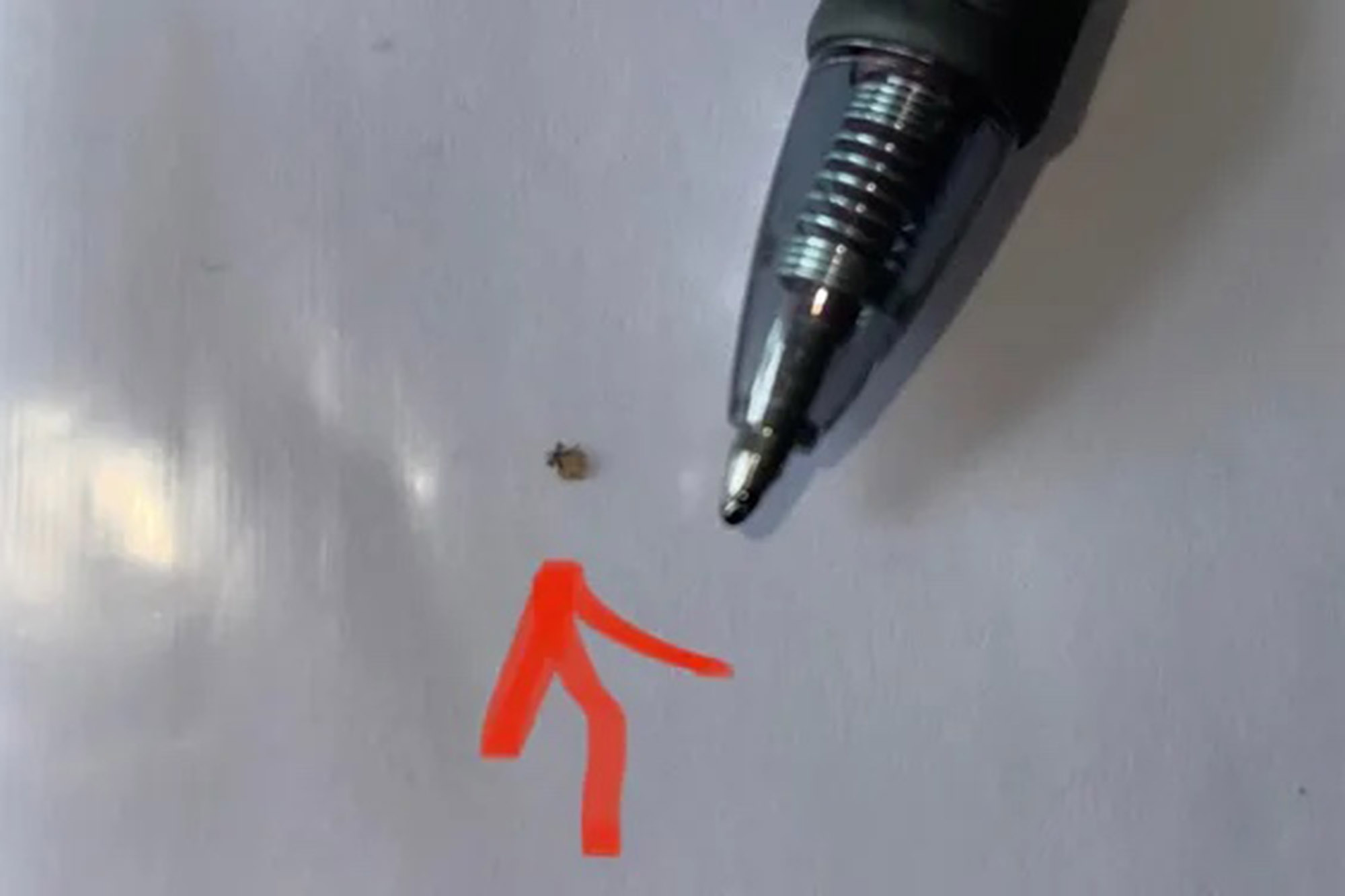
Vaccination is an effective way to prevent infection. The effectiveness of the vaccine is 95%.
Primary vaccination course is carried out at intervals of 1-3 months and consists of two vaccinations. Another one is needed next year. Then, to maintain immunity, the vaccine is administered once every three years.
To avoid being bitten by a tick, you should dress appropriately when going to tick habitats. Clothing should be with long sleeves, trousers, you also need to put something on your head, preferably a hood. Thermal underwear can be very convenient, as it fits perfectly to the body and does not allow the insect to crawl into secluded places.
Long socks or stockings are required and the legs must be tucked into boots or chosen with cuffs. It is desirable that the collar be buttoned tightly enough.
Another effective remedy for ticks is repellents. They are sold in many stores and pharmacies.
Repellent should be applied to the places where the tick gets in the first place – trousers, shoes and legs to the thigh. Tick repellents are quite toxic, so it is advisable to avoid getting them on open areas of the body.
Tick repellents are quite toxic, so it is advisable to avoid getting them on open areas of the body.
To protect children, preparations with a reduced content of repellent have been developed – these are Ftalar and Efkalat creams, Pihtal and Evital colognes, Kamarant. For children from 3 years old, the use of Off-Children’s and Biban-Gel creams is recommended.
Tsifox is used to treat the territory from ticks.
And the third remedy is vigilance. Periodically, you should examine each other for preventive purposes.
If a tick is found, it should not be crushed, because through microcracks on the hands one can become infected with encephalitis.
Tick bite insurance provides a range of medical services:
The victim will be admitted to a special medical facility for seroprophylaxis.
The tick will be removed.
Within two to three days after the bite, the victim will receive a prophylactic course of immunoglobulin.
Insurance can be individual or family insurance (one insurance policy is issued for all households at once).
The insurance contract must have an appendix: a list of all medical institutions where you can get insurance assistance.
What to do if a child is bitten by a tick
We vaccinate children and adults against tick-borne encephalitis! Now the Fantasy Clinic has the Tick-E-VAK vaccine available. It is suitable for children from 1 year old and adults. Vaccination course – 2 doses.
What to do if bitten by a tick? This and other important questions are answered by Svetlana Mukhortova, pediatrician, specialist in infectious diseases in children.
Make an appointment via WhatsApp
Video
Prices
Doctors
The child was bitten by a tick. What to do (air recording)
The first children’s clinic of evidence-based medicine in Moscow
No unnecessary examinations and drugs! We will prescribe only what has proven effective and will help your child.
Treatment according to world standards
We treat children with the same quality as in the best medical centers in the world.




:max_bytes(150000):strip_icc()/spider-bite-or-skin-infection-83017-v1-5c4552ce46e0fb0001c168f9.png) Don’t put Vaseline on the tick, essential oils, or burn it. Instead, use your tweezers to pull the tick straight out of the skin and save it for testing. Wash your hands and the area of the bite with soap and water.
Don’t put Vaseline on the tick, essential oils, or burn it. Instead, use your tweezers to pull the tick straight out of the skin and save it for testing. Wash your hands and the area of the bite with soap and water.